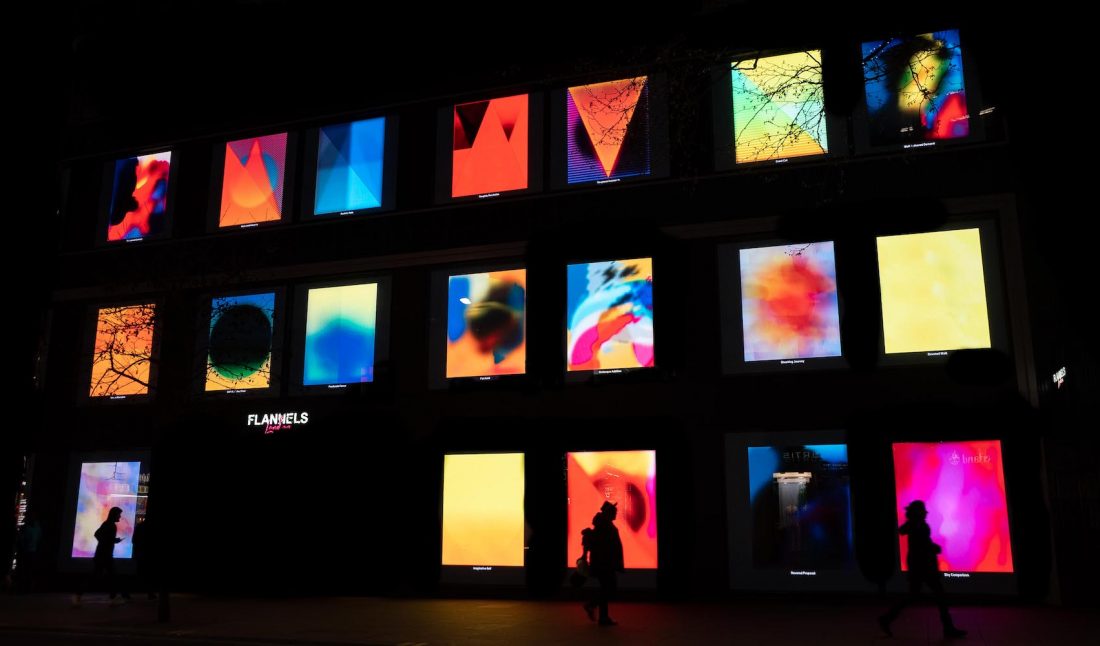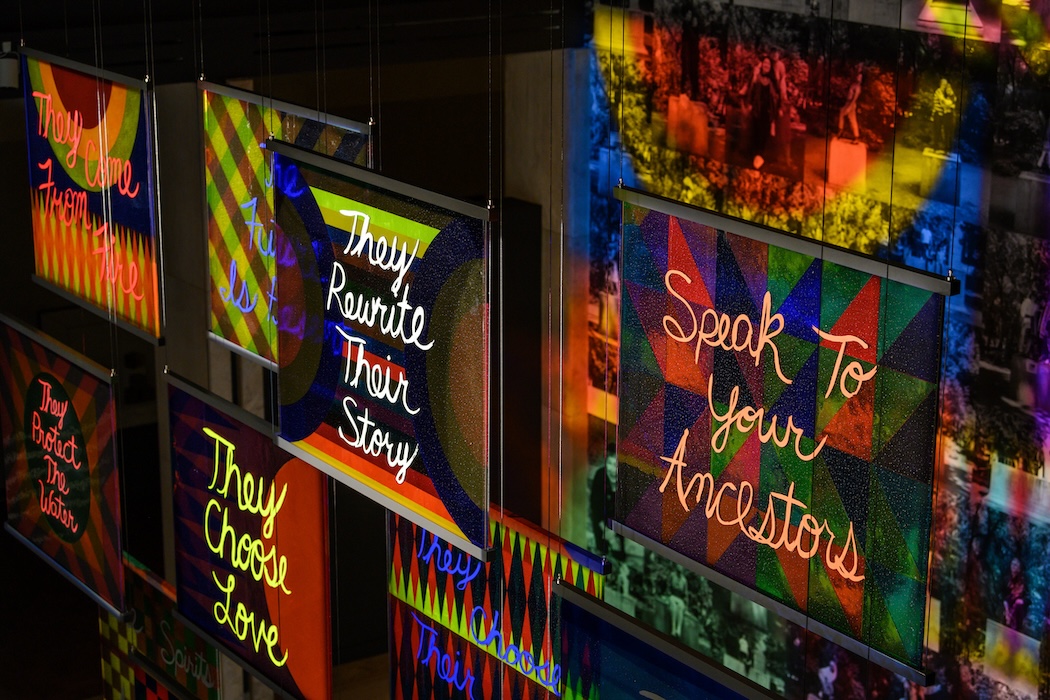Coinciding with the 59th Biennale di Venezia, artist Jonas Lund’s participatory series “MVP (Most Valuable Painting)” opened last week as part of Aorist’s new Venice Program, titled CodeX. On view through May 8, the exhibition is presented by Aorist founder Pablo Rodriguez-Fraile, curator Ximena Caminos, and artist Andrea Bonaceto.
Lund’s “MVP” is an online series of 512 digital paintings which change and evolve based on audience engagement data and sales, examining and decoding how systems of value play out in artmaking and art valuation. With his background in programming, Lund breaks through this process to unearth the global systems that shape our realities, giving viewers a rare opportunity to both participate in and question these often hidden practices. Each painting will be accompanied by a series of NFTs available on the Aorist marketplace.
Whitewall had the opportunity to speak with the artist about unseen forces, engaging with his audience, and interpreting the desirable.
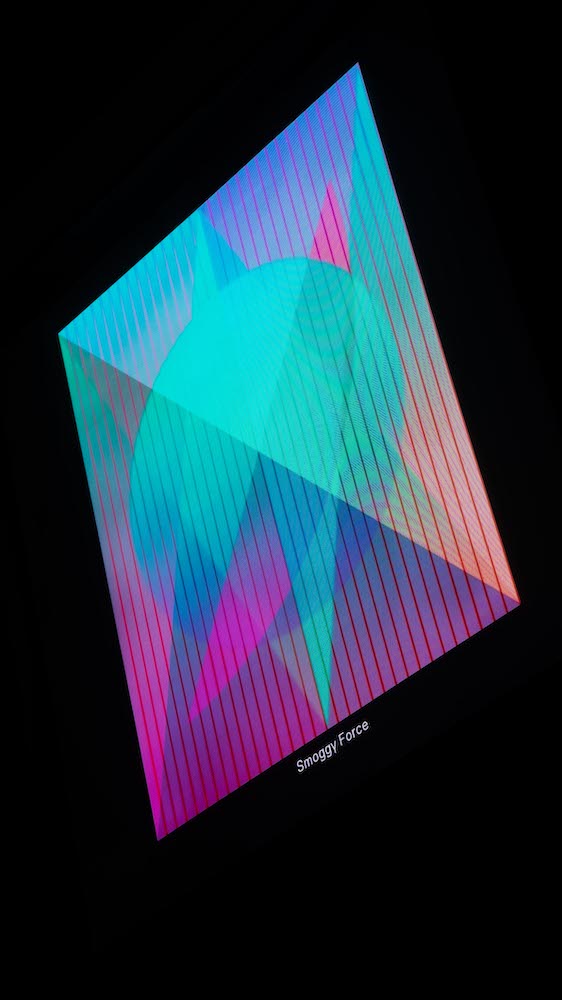 Installation view of Jonas Lund’s “MVP (Most Valuable Painting),” courtesy the artist, Aorist and W1 Curates.
Installation view of Jonas Lund’s “MVP (Most Valuable Painting),” courtesy the artist, Aorist and W1 Curates.
Whitewall: What was the starting point for your project with Aorist in Venice?
Jonas Lund: I’ve been obsessed with value production inside the art world for quite a while and explored this throughout many different works and projects over the last 10 years or so.
At the core of this exploration is a quest to understand how the value of an artwork moves from a subjective personal point of view to an objective established ‘truth’. It’s an opaque system and an even more opaque market, but essentially, since the value of an artwork is subjective and can’t be quantified in any meaningful way beyond its primary and secondary market price, it’s very much up to the people ‘in charge’ to determine what’s relevant and valuable inside the hyper hierarchical power structure that we colloquially call the ‘art world’.
When Warhol created his Brillo boxes and put them in the gallery, the art system needed a definition to be able to separate Warhol’s Brillo boxes from the ones you could find in the supermarket, as they were materialistically identical but conceptually and monetarily completely different. As an indirect response to this, George Dickie analyzed the art world and system and came to the conclusion that ‘A work of art in the classificatory sense is 1) an artifact 2) on which some person or persons acting on behalf of a certain social institution (the art world) has conferred the status of candidate for appreciation’ and coined the Institutional Theory of Art.
So in simpler terms, art is whatever the art world says is art, and by extension, relevant ‘good’ art is whatever the art world says is ‘good’ and relevant art. So the higher up you are in the art world power structure, the more influence you have over what is deemed valuable and relevant and what is not.
For someone that comes from a background in programming, that is super interesting, as it feels like it should be very easy to manipulate that value production process and through that, question and explore the fundamental truths of value and the distribution of power and influence in global networked systems.
WW: Can you speak to the inspirations or activation behind “MVP (Most Valuable Painting)”?
JL: MVP draws its inspiration from hyper-optimized social networks, in which every little action and behavior is recorded, quantified, put into database models, and used to derive meaning and predict future behavior. Combined with an illusive value production mechanism in the art world, MVP aims to determine the most popular version, the most attractive, attention-grabbing, composition out of all its production, yet leave the final choice to the collector, and through a participatory generative process optimize abstract compositions.
WW: “MVP” is participatory in nature, depending on audience engagement, influencing how “desirable” the paintings become. Can you tell us more about how that works?
JL: MVP (Most Valuable Painting) is a series of 512 individual digital paintings that evolve and transform based on public reception until they are acquired.
Once an MVP is sold and minted as an NFT, the visual properties of that work will determine the aesthetic evolution of the remaining works, which slowly optimize their features and composition to mimic the characteristics of the more desirable paintings.
The optimization happens through generations, and each time an MVP is picked, a new generation is created with the remaining works. How this happens is determined by each work’s individual ‘fitness score,’ which is a measurement of how well an individual piece is performing within a given generation. The higher the score, the better the piece is performing, the more ‘fit’ it is. The score determines what happens with the piece when a generation is created.
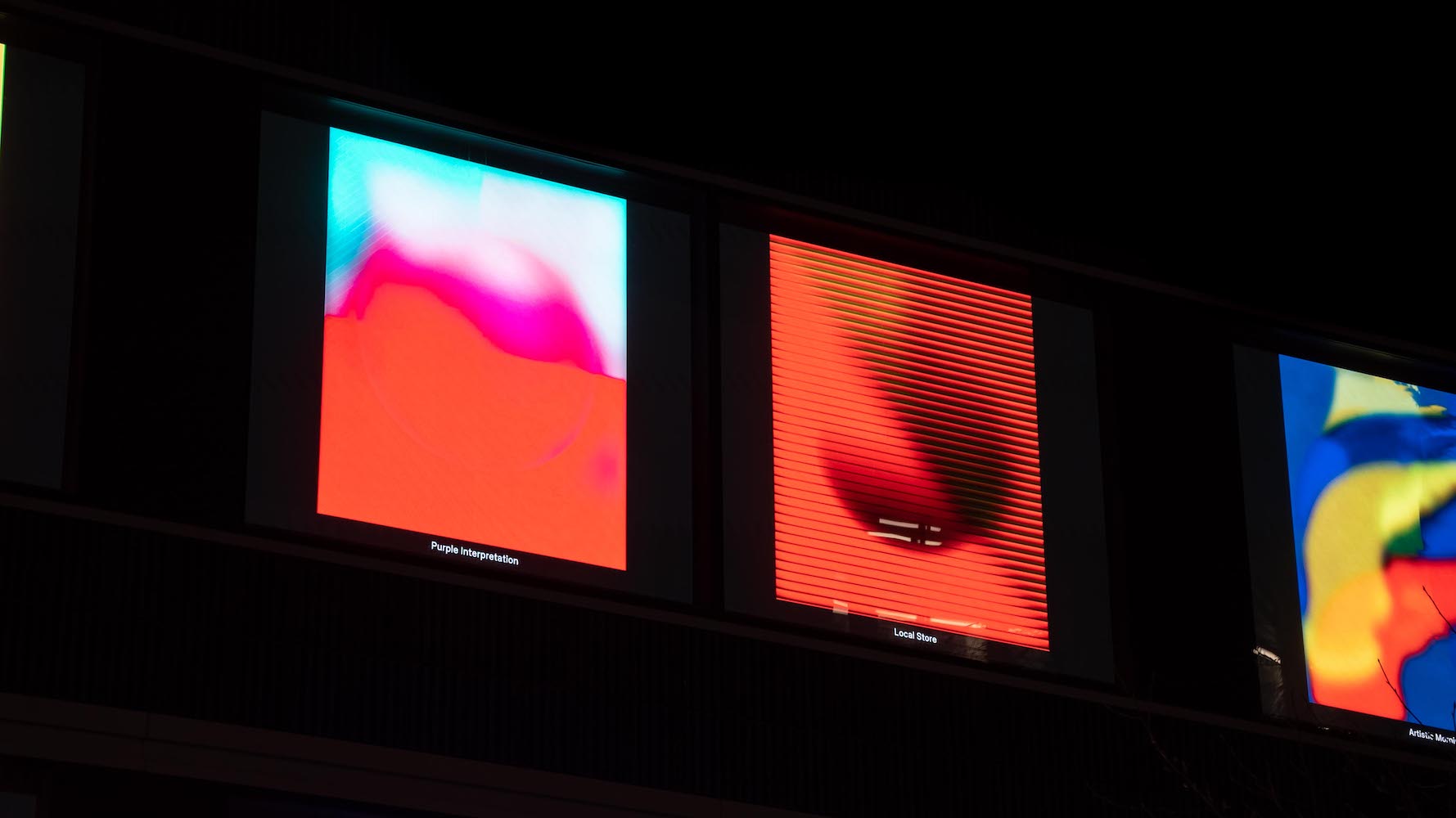 Installation view of Jonas Lund’s “MVP (Most Valuable Painting),” courtesy the artist, Aorist and W1 Curates.
Installation view of Jonas Lund’s “MVP (Most Valuable Painting),” courtesy the artist, Aorist and W1 Curates.
WW: What made you interested in creating this kind of participatory work?
JL: In my work, I often set up systems or define a set of rules and then initiate the process and let it play out. A very performance-driven approach to art production where the process and the rules are at times equal or more important than the final outcome. To me, it seems logical to think of art production as an ongoing changing performative process, where most parts are not fixed or set in stone, but part of a bigger narrative based on how it feels like to be living in this digital century.
But there’s also a logical systematic approach to this particular participatory work. As we concluded above that the value of an artwork is determined by the influential art world participants, and as the collectors are picking which work should be minted and frozen in time and become an artwork and which should be destroyed, the whole system is hedged. The collectors determine the direction of the transformation of the pieces, and as they are one of the core representatives of the art world, whatever they say becomes the established truth, the ‘objective consensus’ in the art world. The network has determined this to be relevant art with a high quality, and so it is. In that sense, it doesn’t matter what the final MVP looks like, as it has already been determined to be the most valuable, both by the MVP system and by the collectors.
WW: What has it been like to watch that engagement change and evolve your work?
JL: As with most systems I set up, it’s both very exciting to see it run, perform and execute its core functions, to see it alive, but also confusing and at times disappointing. I often find it hard to understand the participants’ choices. Why would they select that particular piece, why that piece and not this one that’s clearly better and more beautiful in every way?
WW: In 2018, you developed your own crypto currency, Jonas Lund Token, that gave way to a new art form called “performance-art capitalism.” Your work in Venice will be accompanied by a series of NFTs available on the Aorist Marketplace. What is meaningful, game-changing, and stimulating for you as an artist about the crypto and NFT space? And what is it like to bring that to Venice during the biennale?
JL: It’s an exciting space that’s changing very rapidly. What’s exciting are the new possibilities, new ways of making and distributing agency, influence, and participation and the increased understanding of online and digital art, some fantastic new works in the space by both old-timer crypto artist folk and new ones, that’s all great. What’s not so great about the NFT/Crypto space, the late stage capitalistic hyper-accelerated market and other get-rich-quick-schemes/scams and the plethora of really low quality art. But as with anything new, there’s good sides and bad sides, so it requires nuanced observation, and mindful navigation.
To bring that to the center stage of contemporary art is of course great. The Venice Biennale is the main dominant platform for ‘what’s going on’ in the art world, setting the tone for the most relevant and urgent topics and conversations of our time, so it makes sense that the current ongoing disruption of the power hierarchy is considered in there as well.
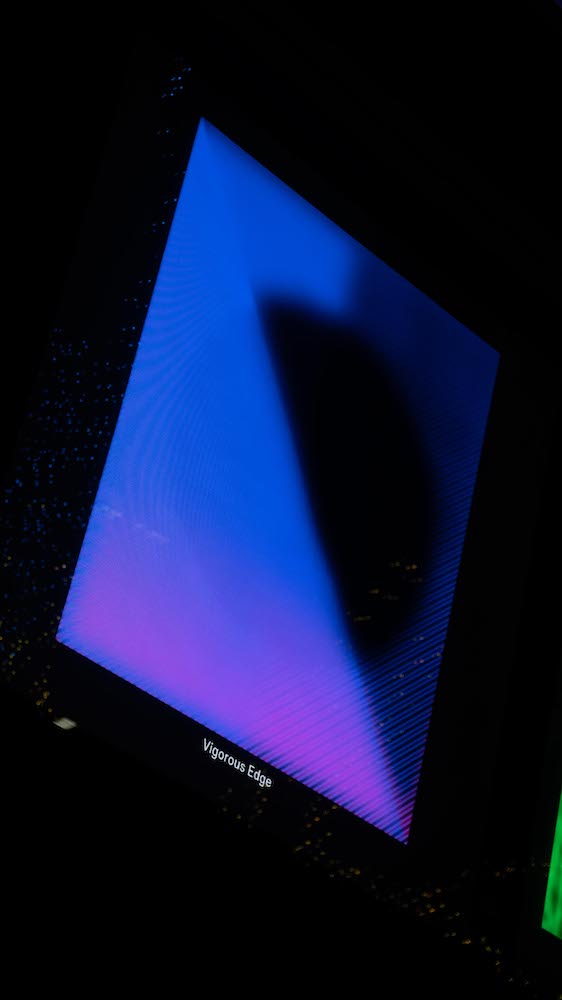 Installation view of Jonas Lund’s “MVP (Most Valuable Painting),” courtesy the artist, Aorist and W1 Curates.
Installation view of Jonas Lund’s “MVP (Most Valuable Painting),” courtesy the artist, Aorist and W1 Curates.
WW: How do you think your experience with creating this work and executing this special exhibition in Venice might carry on to future projects?
JL: I find that in my work – it’s a long running narrative and process, one project leads to another that leads to another, so there’s definitely a continuation of this work and the research, but where that is, it’s hard to say precisely right now, and even if I could, it would all be top secret 🙂
WW: Why was your ongoing series, “MVP (Most Valuable Painting)” a good fit for CodeX?
JL: Aorist’s CodeX displays the work of artists that somehow render these unseen forces visible, inviting us to rethink patterns and coefficients we might inadvertently disregard as mere abstractions, to understand how they could be influencing and shaping the very way in which we live and connect ourselves to our surroundings. In the same way, MVP (Most Valuable Painting) renders how taste defines value and exposes the often-brutal commerciality of the art world, questioning how we perceive the meaning of value in contemporary art across aesthetics, sales, engagement, and influence.






